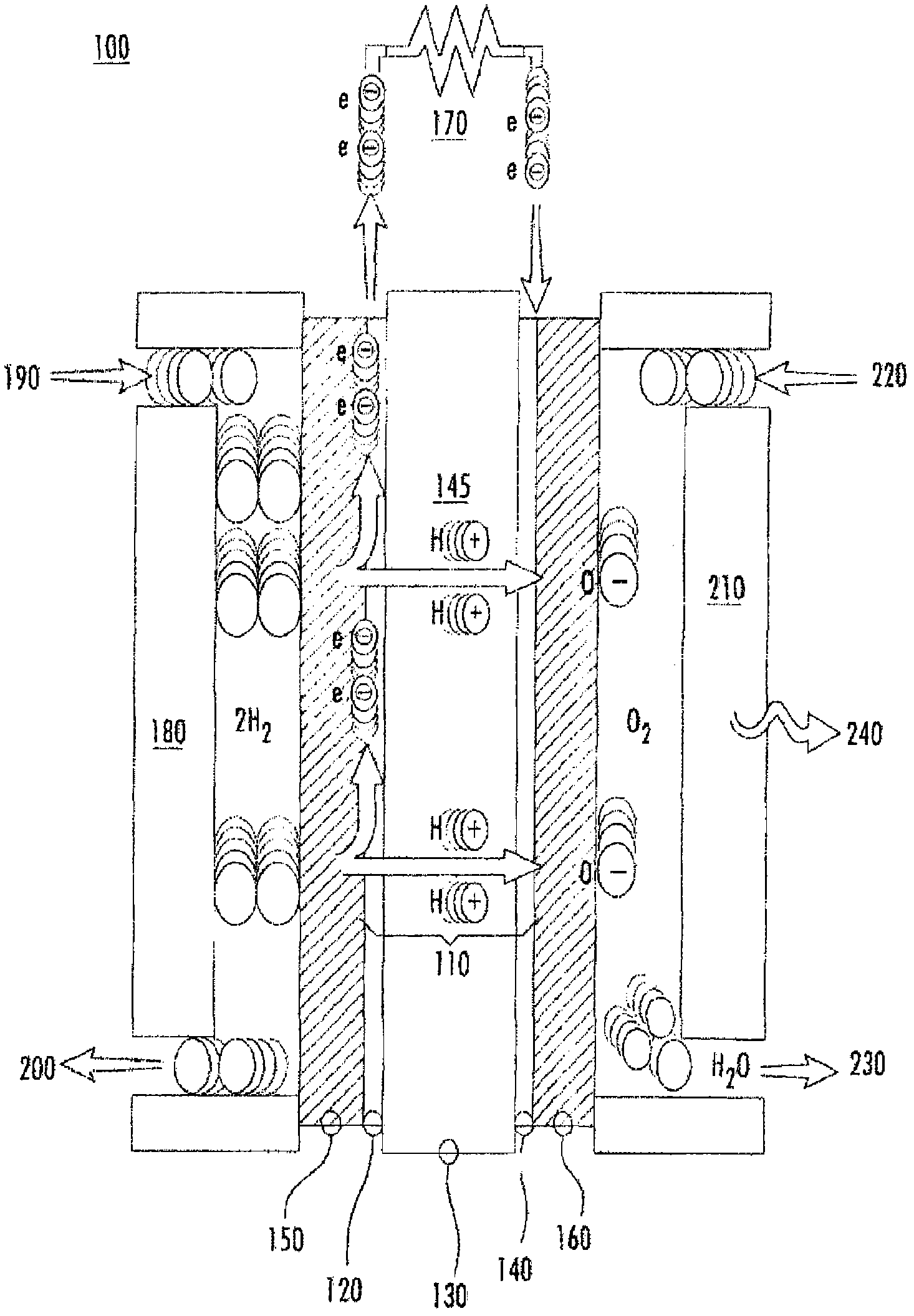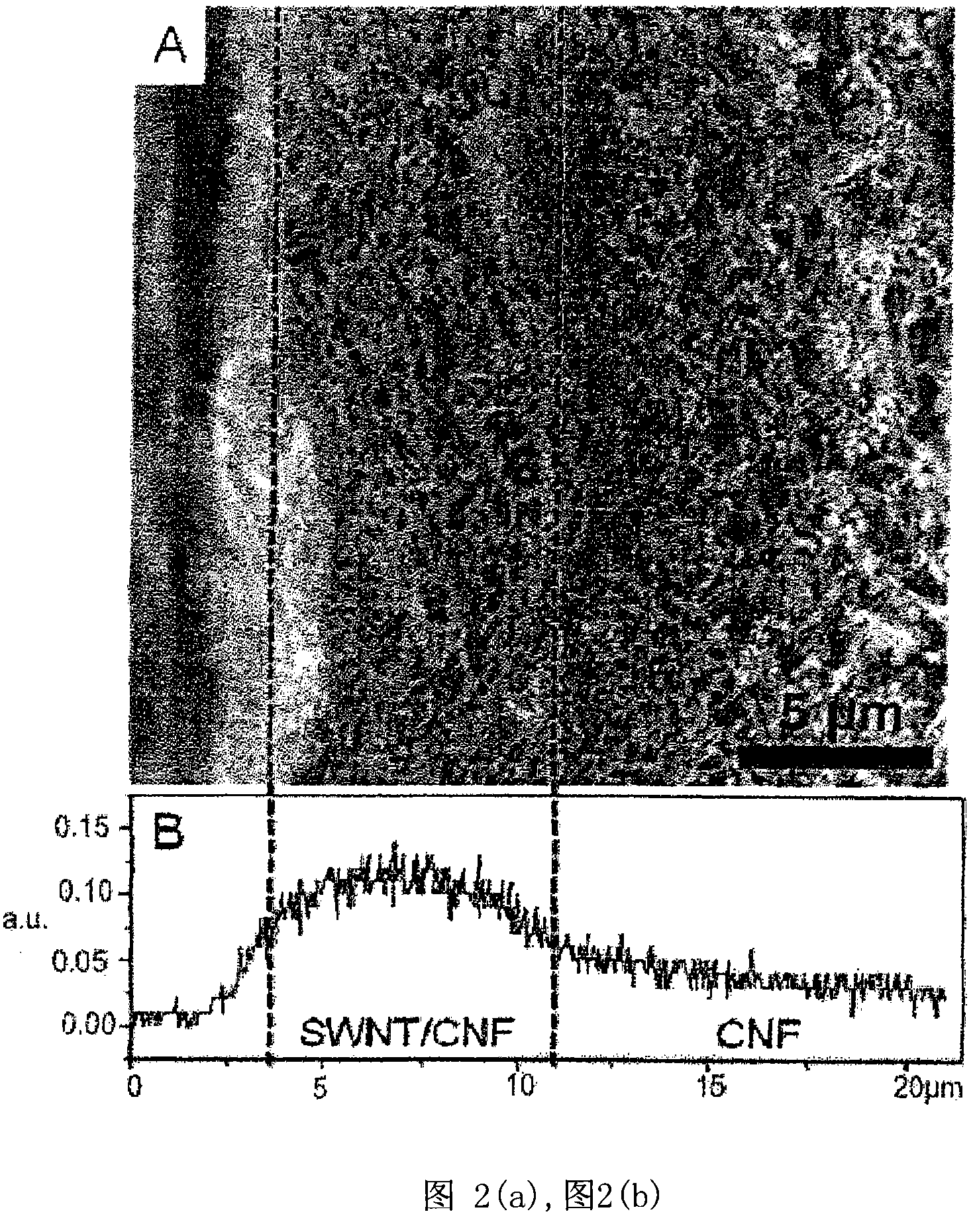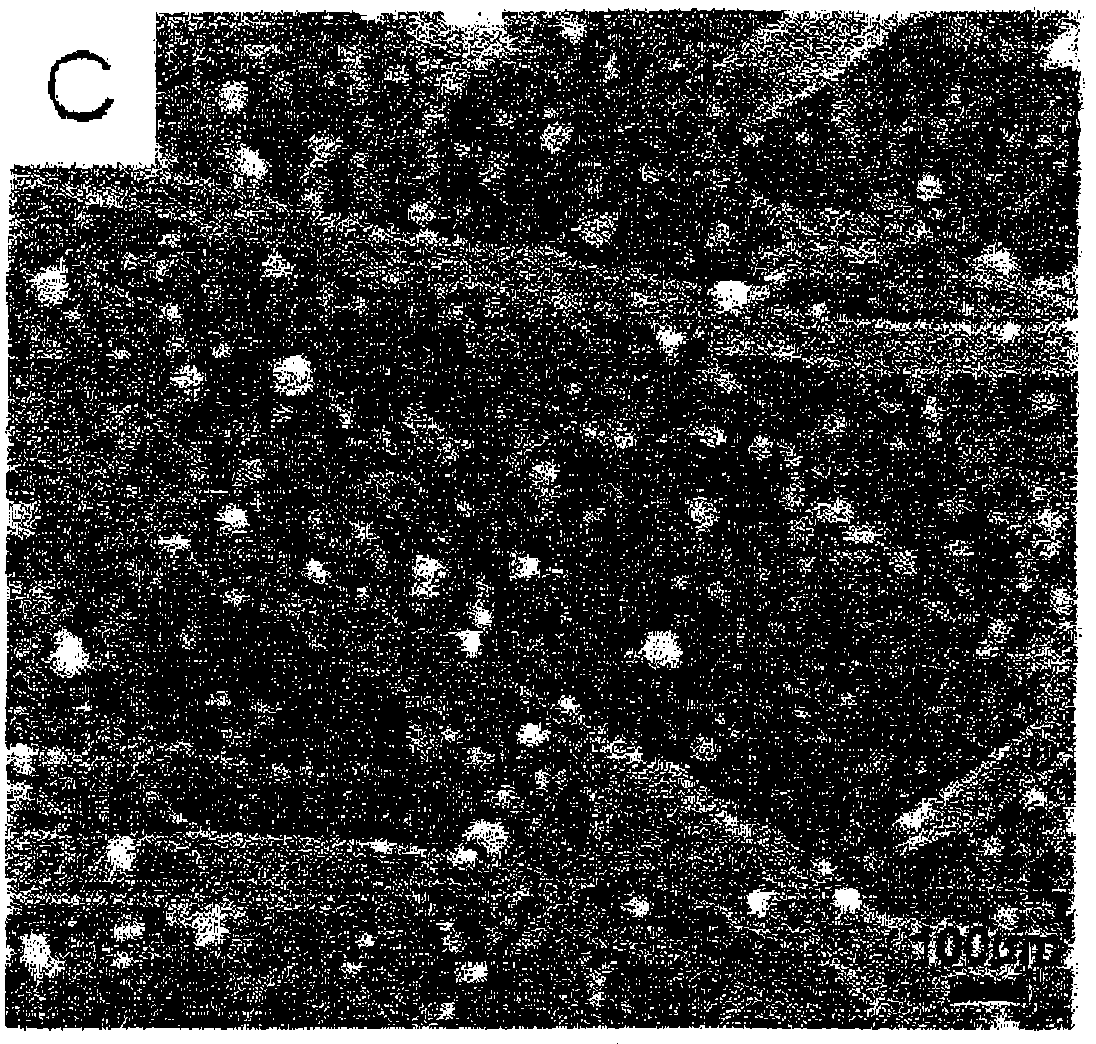Catalytic electrode with gradient porosity and catalyst density for fuel cells
A fuel cell and catalyst technology, applied in fuel cells, battery electrodes, solid electrolyte fuel cells, etc., can solve the problems of poor electron transfer performance Pt active surface degradation or elimination, separation, etc.
- Summary
- Abstract
- Description
- Claims
- Application Information
AI Technical Summary
Problems solved by technology
Method used
Image
Examples
Embodiment 1
[0067] Exemplary gradient catalyst structures were prepared by sequentially filtering a 25 wt% single-walled carbon nanotube (SWNT) / 75 wt% carbon nanofiber (CNF) suspension and a carbon nanofiber (CNF) suspension under full vacuum. As shown in Figure 2(a), the carbon nanofibers are randomly entangled to form a highly porous second layer with a porosity of 90.8% and an average pore diameter of 85 nm, while adding 25 wt% of fine-sized single-walled carbon The nanotubes form smaller pores in the single wall carbon nanotube / carbon nanofiber layer. As a result, the single-walled carbon nanotube (SWNT) / carbon nanofiber (CNF) first layer has a larger surface area (24m 2 / g) much larger surface area (105m 2 / g). After depositing Pt on the multi-layer buckypaper by electrochemical deposition, the energy dispersive X-ray spectroscopy (EDS) analysis in Fig. 2(b) shows a gradient distribution of Pt, with more than 70% of the Pt distributed in a single layer of 7 μm thickness. Walled ca...
Embodiment 2
[0071] Despite the relatively large Pt particle size, Pt / multilayer buckypaper (LBP) with tailored gradient structures has shown promising Pt utilization and support stability. Given the negligible improvement in anode oxygen reduction reaction (ORR) activity using Pt / multilayer buckypaper (LBP), this high cell performance is believed to result from the inventive microstructure of the gradient catalyst structure. To evaluate the effect of microstructure on fuel cell performance, two conventional single-layer buckypaper membrane electrode assemblies were compared in terms of polarization curves and electrochemical impedance spectroscopy (EIS). Conventional buckypaper is composed of a mixture of single-walled carbon nanotubes and carbon nanofibers (with a weight ratio of 1:3, called SF13, or a weight ratio of 1:9, called SF19), and has a thickness of 14 μm. Since Pt was deposited on each conventional buckypaper and Pt / multilayer buckypaper (LBP) under the same conditions, each c...
Embodiment 3
[0075] In the durability study of single-wall carbon nanotube / nanofiber buckypaper catalyst support for proton exchange membrane fuel cell completed by W.Zhu et al. (Journal of the Electrochemical Society "Journal of Electrochemical Society" (2009)) , single-walled carbon nanotube (SWNT) / carbon nanofiber (CNF) buckypaper with Pt catalyst nanoparticles showed good durability under accelerated degradation test conditions simulated in the cathode environment of a proton exchange membrane fuel cell. The reason for good durability is generally considered to be high corrosion resistance due to high graphitization of carbon nanofibers. Subsequently, the Pt / multilayer buckypaper (LBP) based Pt / multilayer buckypaper (LBP ) The durability of the catalyst support of the membrane electrode assembly. Figure 5 Polarization curves at different time courses during the 200-hour durability test are shown. The mass activity measured at 900mV after working for 200 hours has only lost 57.6% of ...
PUM
| Property | Measurement | Unit |
|---|---|---|
| diameter | aaaaa | aaaaa |
| length | aaaaa | aaaaa |
| diameter | aaaaa | aaaaa |
Abstract
Description
Claims
Application Information
 Login to View More
Login to View More - R&D
- Intellectual Property
- Life Sciences
- Materials
- Tech Scout
- Unparalleled Data Quality
- Higher Quality Content
- 60% Fewer Hallucinations
Browse by: Latest US Patents, China's latest patents, Technical Efficacy Thesaurus, Application Domain, Technology Topic, Popular Technical Reports.
© 2025 PatSnap. All rights reserved.Legal|Privacy policy|Modern Slavery Act Transparency Statement|Sitemap|About US| Contact US: help@patsnap.com



